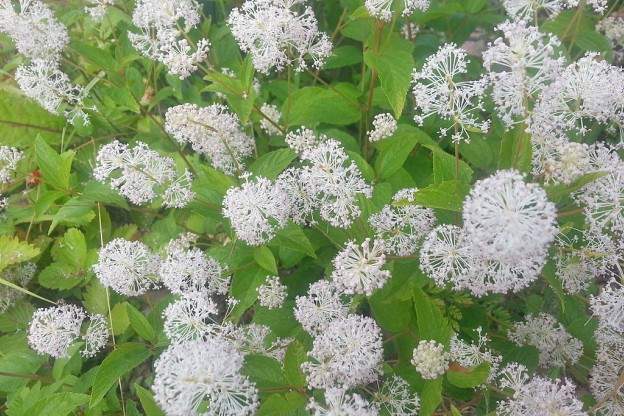Native plants, native insects, and other native wildlife are co-dependent. Plants give shelter and food to birds, insects, and small animals that in turn provide sustenance for larger predators. So, we need native plants in our gardens, since natives are a vital part of a healthy eco-system.
Even small gardens have plants that filter the air around our homes, and native plants additionally prevent soil erosion and build healthy topsoil. Once established, natives require very little water or fertilizer.
If you need some native shrubs, be sure to plant New Jersey Tea (Ceanothus americanus), which is a small, rounded shrub favored by humming birds and pollinators. It is drought tolerant because it has deep roots, so choose the location carefully as once planted it is hard to move. It has white blooms June through August and grows 3 feet high zones 3 to 9 in sun and part shade.
Another useful shrub with the common name St. Johns (Hypericum prolificum) has yellow blossoms July through September and grows 5 feet tall in full to part shade. Bees love it, and deer and rabbits avoid it. It is a host plant for a variety of caterpillars and is a lovely addition to any garden.
This is Moya Andrews, and today we focused on native shrubs.










